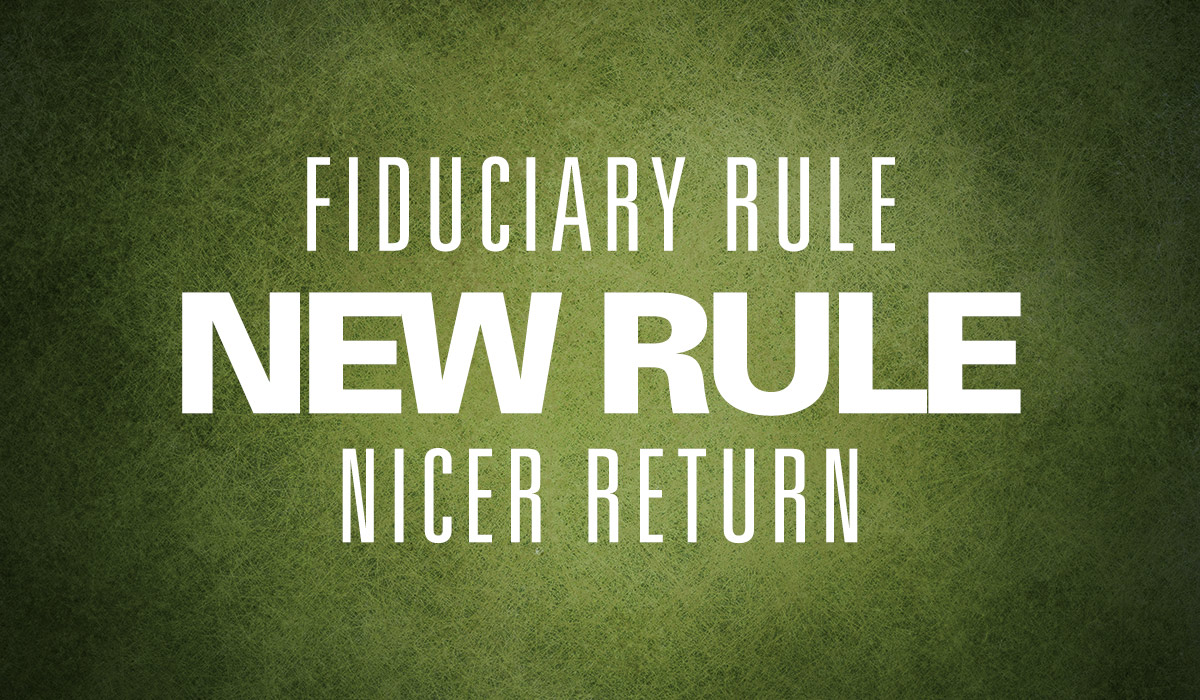Could the new fiduciary rule effectively enhance portfolio performance for retirement savers?
A change is coming. The Department of Labor is introducing a new rule regarding retirement accounts – a rule that is profoundly impacting the financial services industry. The rule will require financial services professionals to serve as fiduciaries when they provide advice about IRAs or workplace retirement plans.1,2
A fiduciary has an ethical and legal obligation to act in the client’s best interest, and must place the client’s best interest above his or her own. Financial services professionals routinely abide by this standard. The problem is that the traditional compensation structure of the financial services industry has sometimes seemed at odds with it.1,2
The traditional compensation structure may end up fading away.
Under that compensation model, financial services professionals were paid based on what they sold. They were compensated when they executed trades for or sold financial products to clients, and they abided by a suitability standard – an ethical obligation to recommend only investments and products suitable for a client’s financial situation. Under the suitability standard, some investments might be more eagerly recommended than others – especially those that might help the brokerage professional hit a sales target or earn a commission.1,2
The new DoL rule instructs these professionals to abide by a fiduciary standard, which shifts the paradigm: if retirement account consultants must serve as fiduciaries, then they will be paid mostly in flat yearly fees. The sun may set, perhaps quickly, on the era of the commission-paid financial professional.1,2
Under the new rule, financial services professionals advising retirement accountholders have to charge “reasonable compensation” for their services, and broker-dealers are prohibited from offering financial incentives that might lead financial services professionals to act in a way detrimental to their clients.1
The last quarter-century has seen the rise of fee-based and fee-only financial services professionals, who earn some or all of their income through advisory fees. The DoL fiduciary rule is an affirmation of the movement they started.2
Financial professionals paid primarily through commissions are still allowed to work with investors in IRAs and other qualified retirement plans. They can provide general financial and investment education without being defined as fiduciaries under the new rule. They can also provide advice, but the client and the financial professional must both sign a Best Interest Contract (BIC), through which the client and the broker/dealer firm involved in the investments agree in writing to a commission-based fee structure.3,4
Investors might see slightly better yields as an effect of all this.
The transition to the fiduciary standard is supposed to be complete by the start of 2018, and in that year and years to follow, retirement savers could see less of their invested assets going to pay for commissions and transaction charges, and perhaps even better alignment of their investments with their best interests.2
There should also be more transparency regarding account fees. That transparency could lead investors out of some qualified plans and into others with lower fees. A Kiplinger.com article notes that annual account savings could range from 0.3%-1.5% as a result of such moves.2
This is a major development for the financial services industry.
It is not without controversy, and there is a chance its implementation may be delayed – but in the big picture, it appears a big change is on the way; one that many retirement savers will likely welcome.
This material was prepared by MarketingPro, Inc., and does not necessarily represent the views of the presenting party, nor their affiliates. This information has been derived from sources believed to be accurate. Please note – investing involves risk, and past performance is no guarantee of future results. The publisher is not engaged in rendering legal, accounting or other professional services. If assistance is needed, the reader is advised to engage the services of a competent professional. This information should not be construed as investment, tax or legal advice and may not be relied on for the purpose of avoiding any Federal tax penalty. This is neither a solicitation nor recommendation to purchase or sell any investment or insurance product or service, and should not be relied upon as such. All indices are unmanaged and are not illustrative of any particular investment.
Citations.
- nytimes.com/2016/04/07/your-money/new-rules-for-retirement-accounts-financial-advisers.html [4/7/16]
- kiplinger.com/article/investing/T023-C032-S014-fiduciary-ruling-save-1000s-in-retirement-savings.html [10/16]
- wealthmanagement.com/regulation-compliance/final-dol-fiduciary-rules-glance [4/6/16]
- dol.gov/ebsa/faqs/faq-conflict-of-interest.html [10/24/16]

